Steph W. from SEOPressor


...help you check your website and tell you exactly how to rank higher?


84
score %
SEO Score

Found us from search engine?
We rank high, you can too.
SEOPressor helps you to optimize your on-page SEO for higher & improved search ranking.
By jiathong on February 26, 2019

Every blogger or copywriter can do this for sure. But without proper actions after publishing your blog, how far do you think you can go in the world wide web?
Not very far, right?
Writing is an art. Post-writing to rank on search engines is also an art we all need to master. Even after you’ve finished writing a blog post, you need to give it time before it builds its own place among the dozens of pages available on the Internet.
Talking about personal experience, I used to write blog posts whenever I had the feeling to do so when I first started out in this field. In about a day or two, I’ll have my blog post ready to be published and pressing the publish button felt like a huge accomplishment.
But the problem is, my blog wasn’t growing as expected.
Of course, it makes total sense that a blog isn’t going to flourish if nobody is visiting. You could have 30 posts in 15 days and if none of them are reaching your target audience, what good have you done?
Know that traffic is the life of all blogs.
Most people write for the sake of getting those words out. They don’t put themselves in the shoes of readers or the reader’s search intent. However, smart bloggers understand that they need to do a number of things for each blog post to ensure its success. The question is, what to do after publishing a blog post?
In this blog, I will be talking about the 7 steps you can take after publishing your blog to ensure better visibility and engagement.
Without further ado, let’s begin!
Yes, you may find it weird to see this appearing after publishing your blog. No doubt, you should be revising it before hitting publish. But, we are only human and we’re likely going to miss something.
Practice going through the post one last time to make sure there are no major typos. Read just like a reader would. Make a mark when something bothers you and go back to it when you’ve done.
Who would believe a writer who has several spellings or grammars up in their sleeves? I’m sure you want to be protecting your credibility in this field.
I don’t know about you but does anyone else publish their posts and then goes back to it and continue editing? Or maybe I am the only one doing it!
The internet is a hugely crowded place. While you may have written an amazing content, don’t forget that there are still millions of them out there waiting to be discovered. One of the most crucial steps is doing content promotion after publishing your blog out for the world to see.
For many of you, especially the web-savvy millennials, interacting using social media is as habitual as breathing. You do it without thinking. Scrolling, snapping, double tapping; it’s become a norm that most people can’t leave without.
In today’s digital marketing era, no business or blog would stand to live long without the presence of social media. Sharing your content on social media is still an excellent way to maximize its reach. To this end, leverage Facebook, Twitter, and other sites to support your promotional blog activities.
Take these media sites as a platform where you can take advantage of relationship building with your current and future readers. However, it’s not just the case of posting once on these social sites and moving onto something else. You need to have a proper media marketing strategy in place.
Before we dive into this, do remember to choose the right channel! I’ve noticed that Instagram can be the best channel for some of the businesses, but I will not be delving into this area today. Here are a few platforms I’d recommend you to pay attention to:
Who’s using Facebook? The short answer is:
Almost everyone.
With more than 1 billion people on Facebook every month, this platform is increasingly popular amongst marketers and business owners. Just so you know, Facebook is the top platform for both B2B and B2C businesses.
Unlike the olden days, you’re no longer constrained by the fact that “older is better”. Now, you can utilize the social web to your advantage, by creating remarkable content and unleashing it to the masses who will share it for you.
If you haven’t already, start a Facebook page and do content promotion for your blog. This is a great, additional subscription option for heavy Facebook users, and it can be a means of expanding your site.
Take SEOPressor for example, this page has been running for a few years now. Not only did it garner attention and gained followers throughout these years, but it has also increased the traffic to our blog. It’s a win-win situation right there!
Because social media platforms can experience a high volume of traffic and engagement, you’d want to make full use of these crowds to bring eyes to your website or blog. Plus, its budget friendly!
Twitter is another great place to engage with your audience and build your following. The real magic of Twitter comes in the form of “networking”.
It’s an awesome place to connect with other bloggers and people interested in the subject of your blog. To gain as much attention as possible, you want to be doing content promotion throughout the day. This means curating your content on a regular basis.
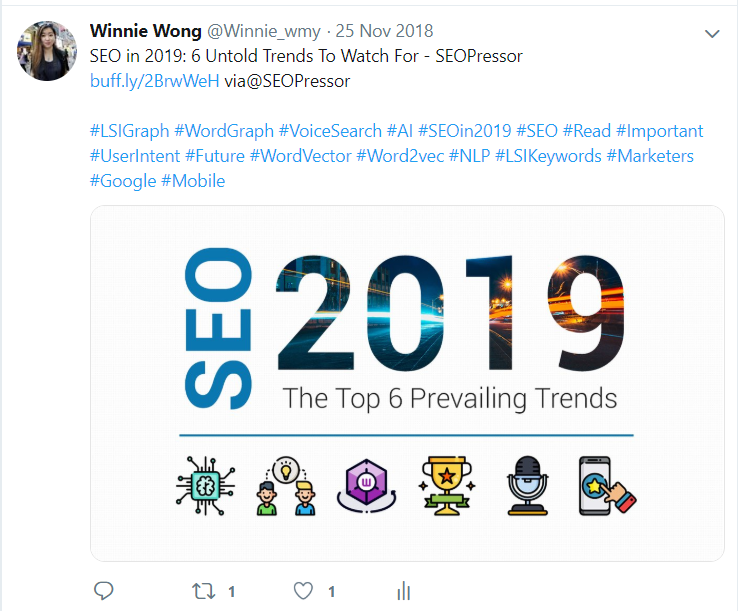
I understand you’re obviously limited in terms of writing a description with 140 characters. But try to captivate your readers with a short, snazzy caption to pique your reader’s interest in reading your blog.
A small tip when you’re tweeting; add a few optimal hashtags to extend your reach beyond your followers.
Lately, I have been using Quora when doing content outreach. Here, people need to know you are an expert in a particular subject and that you have a blog to share your knowledge and experience.
For those of you who don’t know, Quora is a site where people post their questions and other people, who are knowledgeable in that particular subject, chip in their answers too. In short, it’s a question and answer website.
Directing your readers from Quora to your blog is not what you want to achieve here, but helping your readers and let them know where to find you is (your blog). Ready to get started with Quora?
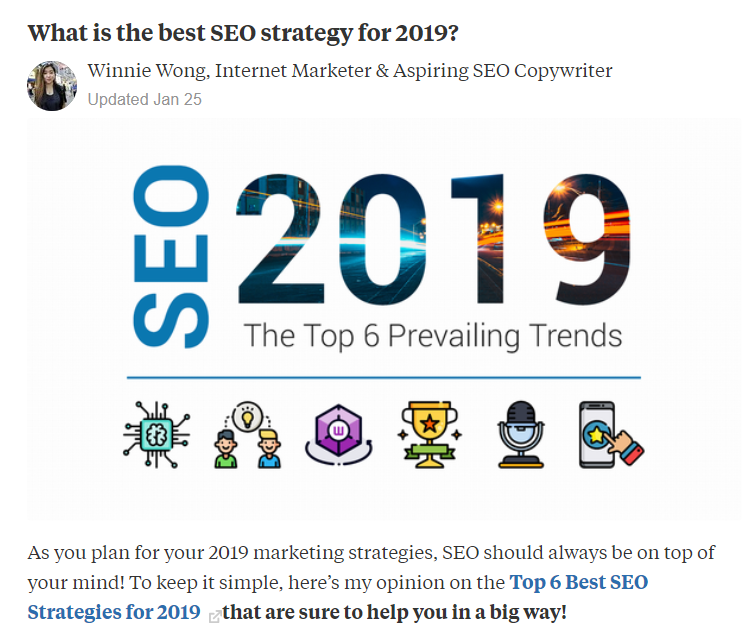
First, create an account with all the necessary information. Then, drop sensible comments or choose the right questions to answer accordingly. Like the example shown above, put a few links related to your blog post in your answers but don’t overdo it. If you are writing elaborate answers, you may drop one or two links to relevant posts in your blog.
Bear in mind that, Quora doesn’t allow mindless promotion and marketing of anything through answers. So, don’t spam as you wish. Do your content promotion right on Quora!
LinkedIn users know this platform as the “professional networking site”.
This company has grown tremendously ever since 2002. To date, it has a whopping 575+ million users! If you’re in B2B, LinkedIn is the ideal place for you to connect with your market, generate leads, develop relationships and drive traffic back to your blog.
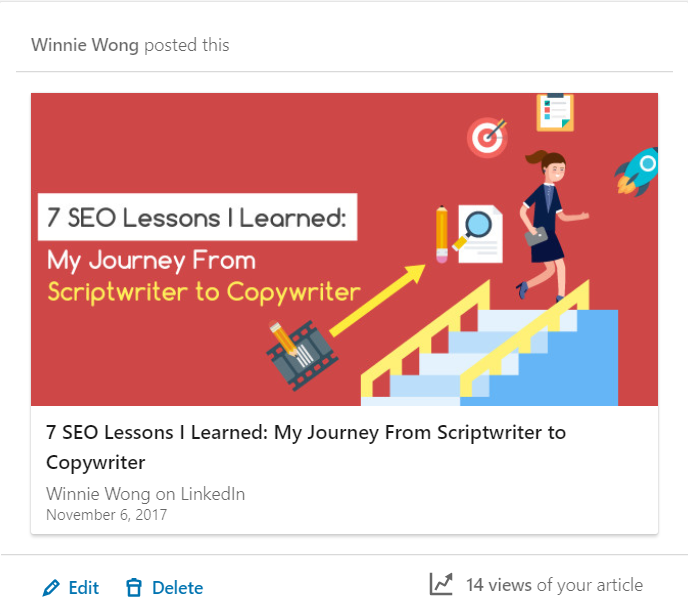
One of the major benefits of using LinkedIn is showcasing your expertise by sharing your blog with your network. As an author, you have the potential to reach millions of people who are interested in what you’ve written about. It certainly goes beyond the hundred or thousands of connection you have.
Furthermore, you can also join and participate in LinkedIn Groups readily available for you. Since these groups are tied to specific interests, industries, and demographics, they contain an already segmented audience to target. That saves a lot of time!
Internal linking kills two birds with one stone.
Why does internal linking even matter? Well, internal linking helps in:
It’s important that you revisit your post occasionally, even if it’s been a while since your initial posting date. If you have a related post that you’ve written about, be sure to go back and insert it into older posts you may previously have that relates to it.
At this rate, traffic is still coming in. So this is a great way to take the opportunity by keeping people on your site and sending them to your other pieces of content. Directing your readers to important posts will ensure they will have the best experience possible. All done through internal linking.
If you’ve read any of my blog posts, you know that internal linking is something I take really seriously. Each post is sure to have a fair amount of internal links in it.
Now, this is all possible with the presence of LinkVector.io
Link Vector is a powerful SEO tool designed to help you to solidify your website’s on-page SEO with a strategic internal linking, thereby increasing your site rankability. The tool is powered by their proprietary Document Relevance Rating formula, programmed to discover and understand the contextual distance of each link in a domain.
What this tool does is it will analyze your domain and reveal the necessary actions to be taken to improve your internal link structure. From detecting broken links to managing custom alerts, you can organize your link building campaigns at ease.
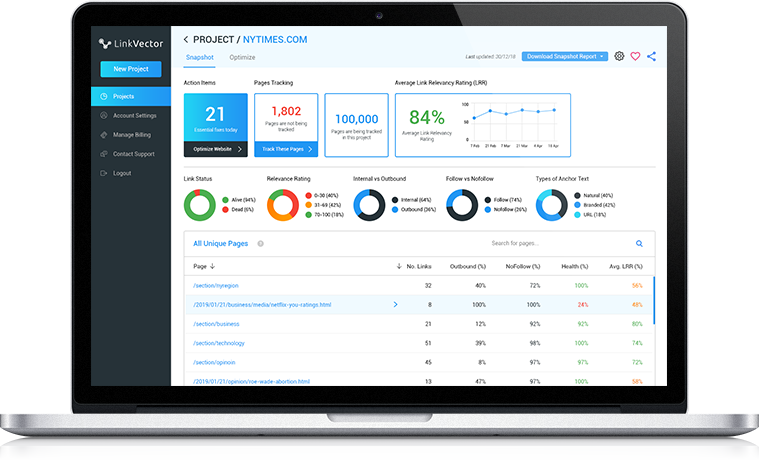
Their unique selling point that differentiates them from the rest of the tool in the market is their Link Relevance Rating feature.
The tool helps you discover all the internal and outbound links in your domain and present them in an organized and meaningful structure. With this feature, there’s no way you could have “missed” them now.
So start identifying internal linking opportunities and spread their value across pages in need of an SEO boost.
Go try out this game-changer of the SEO world yourself today!
Subscribers are the most loyal audience any blogger can have.
If you’ve got a sizable list of loyal subscribers, you are given the consent to circulate your content. This is rather optional because some bloggers don’t like to “disturb” their mailing list with minor updates.
As for me, I’d take the route of sending out a weekly dispatch by letting people know about the new post up on the blog. If you’ve subscribed to SEOPressor for some time, you would certainly have come across the newsletters we’ve curated for you. (If you are, thank you!)

This helps to keep those dedicated to your blog in the loop and all caught up with their reading. Those who are subscribed to your email list are some of your biggest fans, so don’t disappoint them by not keeping them informed!
Those of you who don’t have an email list should build one right away!
Capture the audience first, and engage with them at the deeper level.
Getting the audience to click and read your content is just the beginning, getting them to stay longer and return to your site more frequently, is the challenging part.
In the digital world today, there are content and information available on virtually every subject. Therefore it is getting harder to stay connected with your audience if you do not establish a strong connection with them.
Apart from creating valuable and relevant content, your content shall help you to engage your audiences, and keep them coming back for more.
Also, be consistent and connected.
Considering you are creating content for topics surrounding a particular interest, and your audience is consuming them on a regular basis. Be sure to check if your old and new content has a consistent topic and if they are connected.
For instance, as a content marketer you wrote a blog to teach your audience how to build a high-quality website. Your following blog might want to share about content planning. Create relevant types of content to tell your audience what they should and are supposed to do next, upon completing lessons from the previous content.
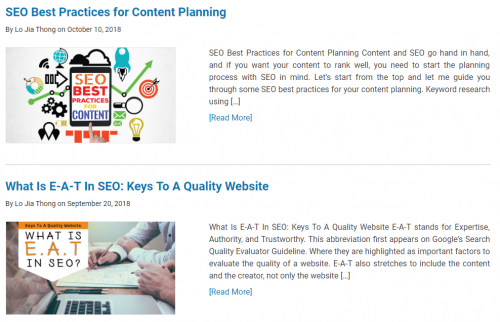
Here’s an example taken from the SEOPressor blog
One of the biggest challenge faced by content writers today is to come out with a new topic and ideas for content creation. Well, you actually do not have to come out with new topic every time. Instead, creating relevant and connecting content establishes a strong engagement with your audience!
Treated right, your audience would never leave you.
We can only improve if we know where to improve.
Your ability to look into analytics, analyze and identify the good and bad determines the success of a campaign, project, and business.
As discussed, creating engaging content is one of the crucial element to establish a connection, keep your audience coming back, and ensure the success of a content marketing.
So how do you know if your content is engaging well?
By integrating your site with Google Analytics, it will help you to collect all information needed to evaluate your content engagement. There are 3 metrics that you should be looking into, namely time on page, bounce rate, and click-through rate.
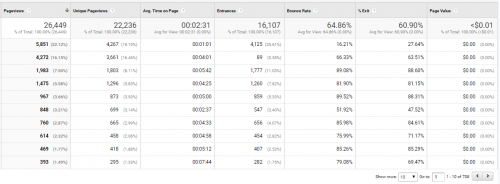
An overview oF what you’ll see in Google Analytics
This is the average amount of time your site’s visitor spent viewing a specific page within your website. The longer the time, the better your content is engaging with the viewers. In other words, your content is well designed and written.
This is the percentage of a page being closed by the viewer without any interaction. If you are seeing high bounce rate on a page, it means that the content in the page is not relevant and therefore it is not engaging.
Bear in mind that, high bounce rate kills a website’s SEO.
This is different from the two metrics above. CTR is not a straightforward metric presented to you in your analytics. You need to be doing a simple math to compute this metrics.
CTR is the percentage of visitors clicking on a specific hyperlink or call to action within your content. For example, you placed a hyperlink of “read more” within your content, the number of visitor who click the hyperlink over the total number of visitors who viewed your content is the CTR.
The higher the CTR, the better your content is engaging with the audience.
Assuming you are at the stage of after publishing your blog out in the battlefield. Despite it being polished over and over again, it still doesn’t fetch any positive results to your rank nor traffic.
Do you think to yourself why is this happening to you?
Well, you’ll need to know where your competitors are using their main keywords, and what are those keywords they are targeting that you might be missing out.
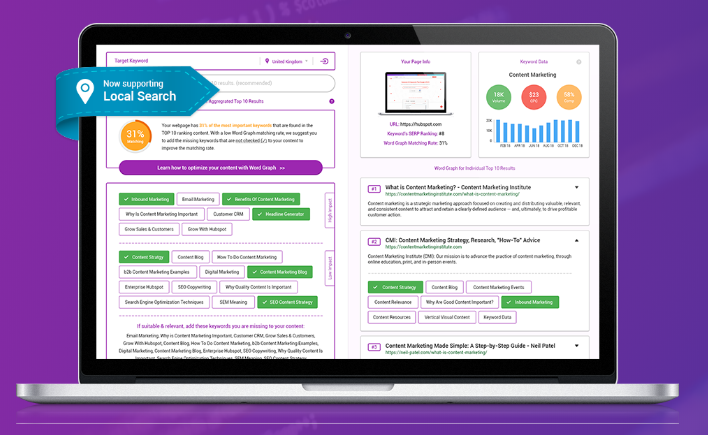
Your answer lies in WordGraph, the world’s first intelligent Word Vector Tool. It is one of the best tool to utilize after publishing your blog, and when you’re aiming to rank it at the top of the SERP.
See, WordGraph is designed for you to analyze and compare you against top 10 ranking, by telling you what keywords to use. They show you the best content gap analysis and keyword composition to rank your site higher.
It is designed to tackle the exact search matching for the closest words around the user’s specific seed keyword.
What’s more impressive about WordGraph is that it’s powered by the Word Vector Technology based on Artificial Intelligence. It identifies the keyword composition the Top 10 ranking websites are using, and suggest a list of keywords you can use in your content based on high & low priority, making the website optimization process effortless.
Besides that, you can almost instantly uncover your competitor’s keywords and see what makes them rank in the first place too!
With this crucial piece of information, you’re basically scraping your competitors’ keyword research and planning effort to use it as your own. You can be sure it is going to work because they are analyzed from those already in the Top 10 Ranking on SERP.
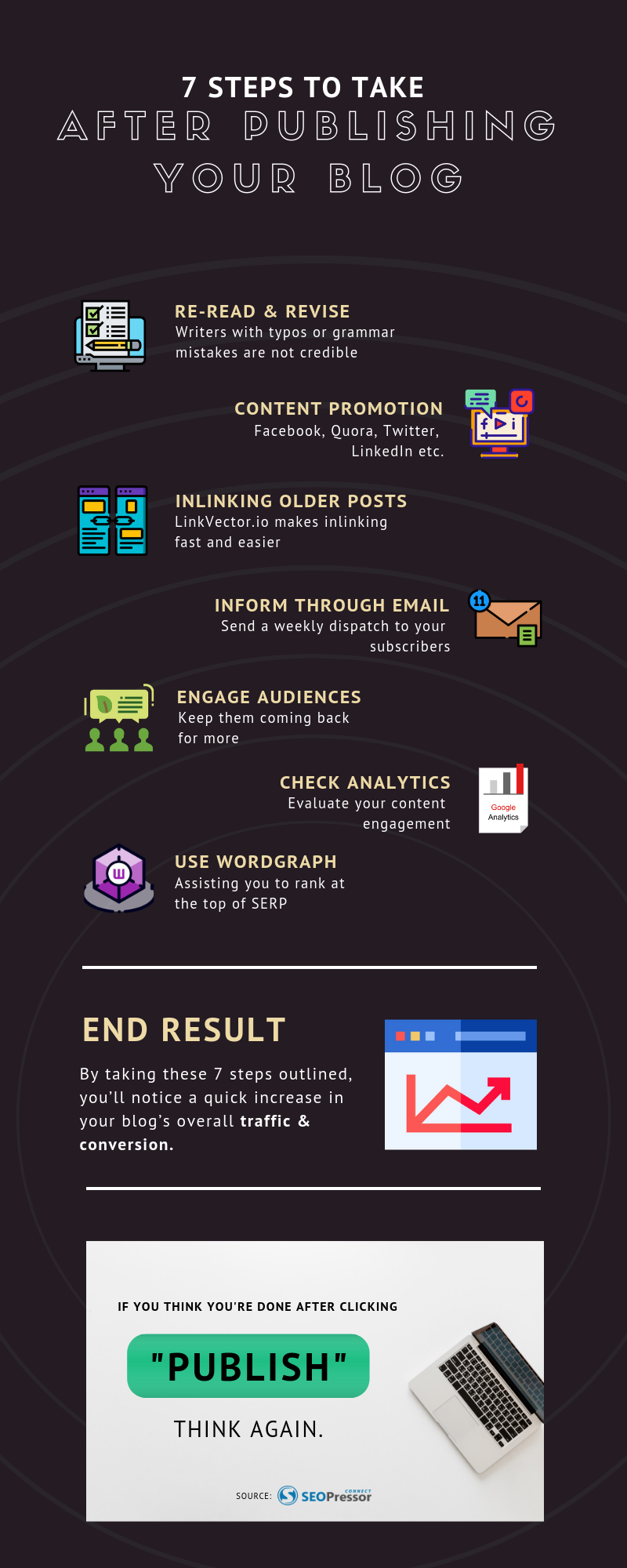
Always remember, your work doesn’t end when you’ve written a blog and hit the publish button. It goes beyond that.
As you’ve come to the end of this blog, I strongly urge you to head over to your blog post and update those that are outdated and not receiving any traffic. They represent a significant amount of your content and marketing investment when it comes to SEO.
You may read more about this topic on another blog post written here.
By using these 7 steps I’ve outlined above, trust me, you’ll notice a quick increase in your blog’s overall traffic and conversions.
It’ll be great if you’d tell me which methods you prefer among the 7 steps after publishing your blog! Or if you have other suggestions, leave a comment below! Looking forward to hearing from all of you!
Updated: 4 January 2026


Save thousands of dollars (it’s 100x cheaper)

Zero risk of Google penalty (it’s Google-approved)

Boost your rankings (proven by case studies)
Rank High With This Link Strategy
Precise, Simplified, Fast Internal Linking.
